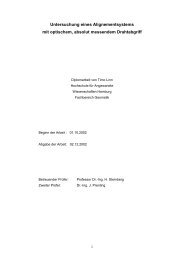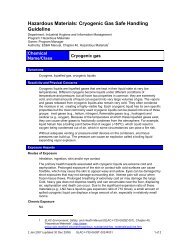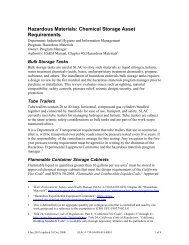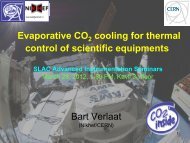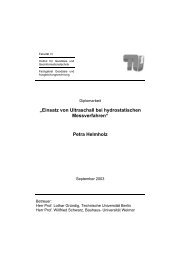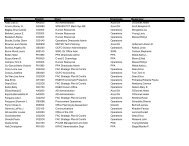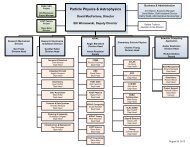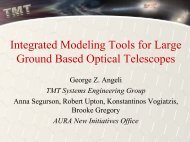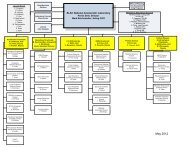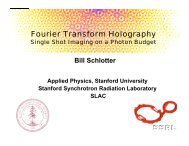BES - SLAC Group/Department Public Websites - Stanford University
BES - SLAC Group/Department Public Websites - Stanford University
BES - SLAC Group/Department Public Websites - Stanford University
You also want an ePaper? Increase the reach of your titles
YUMPU automatically turns print PDFs into web optimized ePapers that Google loves.
FYO7 <strong>SLAC</strong> S CIENCE AND T ECHNOLOGY S ELF E VALUATION<br />
O PPORTUNITIES FOR I MPROVEMENT<br />
Spectroscopy and Scattering Study of Complex Materials<br />
Higher capabilities in ultra-high resolution photoelectron spectroscopy of complex materials will be<br />
realized by upgrading BL5 with a new undulator and monochromator to allow higher energies to be<br />
reached.<br />
Objective 1.3 Provide and sustain Science and Technology Outputs that Advance Program Objectives and<br />
Goals<br />
XLAM’s research output can be measured in the number of publications and invited talks by faculty<br />
and staff. As of this writing, there were 94 publications in 2007 and 73 invited talks by XLAM<br />
faculty and staff.<br />
Objective 1.4 Provide for Effective Delivery of Science and Technology<br />
As indicated above, a significant number of new instruments were developed and discoveries made<br />
in FY07. The capabilities of XLAM can also be seen through the large number of collaborations,<br />
indicating that scientists from all over the world look to XLAM for both measurement and synthesis<br />
capabilities.<br />
N OTEWORTHY P RACTICES<br />
Spectroscopy and Scattering Study of Complex Materials<br />
The high level of performance in both the SSRL-based and laboratory-based instruments that are part<br />
of this effort has brought collaborators to the project and new users to SSRL.<br />
HEP<br />
E ▪ PEP-II<br />
The PEP-II program provides data to the BABAR detector collaboration and carries out accelerator<br />
physics for High Luminosity Colliders. Many accelerator and BABAR publications arose from the<br />
PEP-II accelerator work.<br />
Conceptual Design Reports<br />
PEP-II Staff, et al, “SuperB: A High Luminosity Asymmetric e + e - Super Flavour Factory,”<br />
<strong>SLAC</strong> PUB R-856, March 2007.<br />
PEP-II accelerator papers (See the <strong>Public</strong>ations Appendix)<br />
Three invited at PAC 2007<br />
Other contributed accelerator physics papers: 18.<br />
The PEP-II accelerator staff also contributed to several successful program and technology reviews<br />
throughout the DOE complex and throughout the world, as listed below.<br />
J. Seeman, Lehman Review of NSLS-II, Brookhaven, New York, December 2006<br />
J. Seeman, KEKB Accelerator Review Committee, Tsukuba, Japan, February 2007<br />
J. Seeman, Committee of Visitors Review, Office of High Energy Physics (OHEP),<br />
Germantown, Maryland, June 2007<br />
J. Seeman, Directors Review of ERL@CESR, Cornell, New York, August 2007<br />
J. Seeman, International Linear Collider (ILC) Machine Review Committee, Manchester,<br />
England, January 2007<br />
J. Seeman, ILC Machine Review Committee, Fermi National Accelerator Laboratory<br />
(FNAL), Illinois, April 2007<br />
U. Wienands, Project Review of NSLS-II, Brookhaven, New York, September 2007<br />
A. Fisher, Review of the LHC Accelerator Research Program (LARP) Luminosity<br />
Monitor, LBNL, Berkeley, California, August 2007<br />
F I N A L P A G E 3 1



